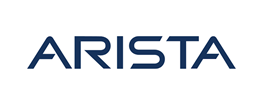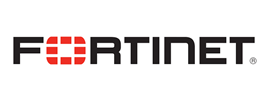- Course overview
- Course details
- Prerequisites
Course overview
About this course
Red Hat System Administration I (RH124) equips you with Linux administration "survival skills" by focusing on foundational Linux concepts and core tasks. You will learn how to apply command-line concepts and enterprise-level tools, starting you on your journey toward becoming a full-time Linux system administrator.
This path continues with the follow-on course, Red Hat System Administration II (RH134).
This course is based on Red Hat® Enterprise Linux 9.0.
Audience profile
- The primary persona is a technical professional with current or pending responsibilities as a Linux enterprise or cloud system administrator.
- This course is popular in Red Hat Academy, and is targeted at the student who is planning to become a technical professional using Linux.
At course completion
You will be able to:
- Introduce Linux and the Red Hat Enterprise Linux ecosystem.
- Run commands and view shell environments.
- Manage, organize, and secure files.
- Manage users, groups and user security policies.
- Control and monitor systemd services.
- Configure remote access using the web console and SSH.
- Configure network interfaces and settings.
- Archive and copy files from one system to another.
- Manage software using DNF
Course details
Outline for this course
- 1. Get started with Red Hat Enterprise Linux
- Describe and define open source, Linux distributions, and Red Hat Enterprise Linux.
- 2. Access the command line
- Log into a Linux system and run simple commands using the shell.
- 3. Manage files from the command line
- Copy, move, create, delete, and organize files while working from the bash shell.
- 4. Get help in Red Hat Enterprise Linux
- Resolve problems by using local help systems.
- 5. Create, view, and edit text files
- Manage text files from command output or in a text editor.
- 6. Manage local users and groups
- Create, manage, and delete local users and groups, as well as administer local password policies.
- 7. Control access to files
- Set Linux file system permissions on files and interpret the security effects of different permission settings.
- 8. Monitor and manage Linux processes
- Evaluate and control processes running on a Red Hat Enterprise Linux system.
- 9. Control services and daemons
- Control and monitor network services and system daemons using systemd.
- 10. Configure and secure SSH
- Configure secure command line service on remote systems, using OpenSSH.
- 11. Analyze and store logs
- Locate and accurately interpret logs of system events for troubleshooting purposes.
- 12. Manage networking
- Configure network interfaces and settings on Red Hat Enterprise Linux servers.
- 13. Archive and transfer files
- Archive and copy files from one system to another.
- 14. Install and update software packages
- Download, install, update, and manage software packages from Red Hat and yum package repositories.
- 15. Access Linux files systems
- Access, inspect, and use existing file systems on storage attached to a Linux server.
- 16. Analyze servers and get support
- Investigate and resolve issues in the web-based management interface, getting support from Red Hat to help solve problems.
- 17. Comprehensive review
- Review the content covered in this course by completing hands-on exercises.
Prerequisites
Basic technical user skills with computer applications on some operating systems are expected.
Enquiry
Course : Red Hat System Administration I
Enquiry
request for : Red Hat System Administration I





















